By clicking a retailer link you consent to third-party cookies that track your onward journey. This enables W? to receive an affiliate commission if you make a purchase, which supports our mission to be the UK's consumer champion.
Home office ideas, tips and inspiration

Working from home, or at least hybrid working, is the new normal for many of us. To help you avoid distractions and stay focused on your work, we recommend setting up a home office or a dedicated working space.
Whether you're using a spare room or a study, the kitchen table or a garden room, you can create a working space that has everything you need to knuckle down. Making sure you have reliable tech is important, but so is decorating the area in a way that makes it a pleasure to work in.
Here, we share some home office design ideas to inspire you when it's time to decorate.
Home office decor ideas
Colour can instantly transform a dull corner into a welcoming space that encourages you to stay productive, so why not spend some time decorating your home office?
'Pick colours that you love, to help brighten your mood and improve productivity,' says Karen Haller, colour psychology expert and author of The Little Book of Colour. 'When it comes to colour psychology, yellow communicates happiness and optimism – it’s like a cheery hello!'
Other home office decor ideas include:
- Add some greenery Plants can help to oxygenate a space and result in numerous health benefits, including reducing fatigue and headaches. However, contrary to popular claims, plants will do little to purify the air indoors.
- Make the most of wall space Fill an empty wall in your home office with a stylish calendar, whiteboard or shelving. These keep your desk clutter-free and encourage you to stand up every so often.
- Add a rug A wool rug will add warmth to the room you're working from. It can also go some way to protecting your carpet if you're rolling around in your office chair.
Small home office ideas
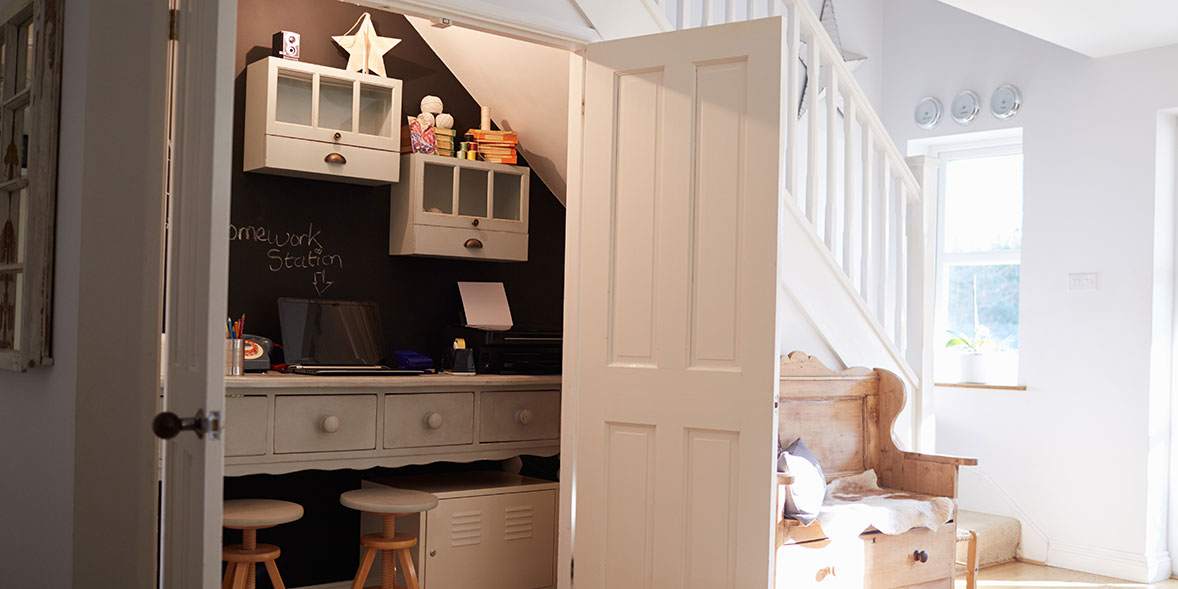
Making the most of vertical space can help. Your home office desk only needs to be as wide as your PC monitor or laptop, so consider adding some floating shelves above you for general office supplies. You could also transform an old cupboard into an office desk, incorporating a shelf for your PC.
If you have stairs at home, you may be able to create a little nook underneath. Putting some art on the wall and adding hanging lights above you will make the space feel cosier.
Standing room dividers or curtains can also come in handy if you want to separate a single room into different zones.
Home office setup
You could potentially be spending most of your waking hours in your home office – so it's worth investing time and money to get the set up right to help maximise productivity, and to add a few personal touches.
Here are some home office setup tips:
- Keep things organised: Your productivity will take a real hit if you're surrounded by clutter. If you use a lot of paper, try buying some stackable letter trays or a filing cabinet, plus some stationary organisers. If you need a laptop stand, look for one with a drawer for extra storage space.
- Add shelving: If your desk is against a wall, shelving above your desk will provide you with invaluable space to store documents, or add lighting, pictures and decorations.
- Consider your cables: Run the cables around the back of your desk and keep them compact with some cable tidies. Ikea and Amazon sell a whole range of cable management accessories that keep things looking nice and neat.
- Make sure your desk is big enough: Ideally, you'll have space for multiple monitors, especially if you need to read one document while working on another. Incorporate a surface that you can make notes on while you're at your computer, too.
- Consider a corner desk unit: Especially if you need a surface away from your computer to draw, write or read paper documents. A corner desk unit can also work well if your home office is a shared space.
- Get a good office chair: One with plenty of back support is the key to sitting comfortably all day. If you don't want to invest in a new chair, try a special support cushion or lumbar roll and position it at the base of your spine.
- Let there be light: A well-lit environment is important for your health and reduces eye strain if you're staring at a monitor. It can also boost productivity and keep your mood up. Natural light is ideal, but add desk lamps or standing lights if things are a little dark.
Struggling with storage? Browse our storage and organisation advice guides
Where's the best place to set up your home office?
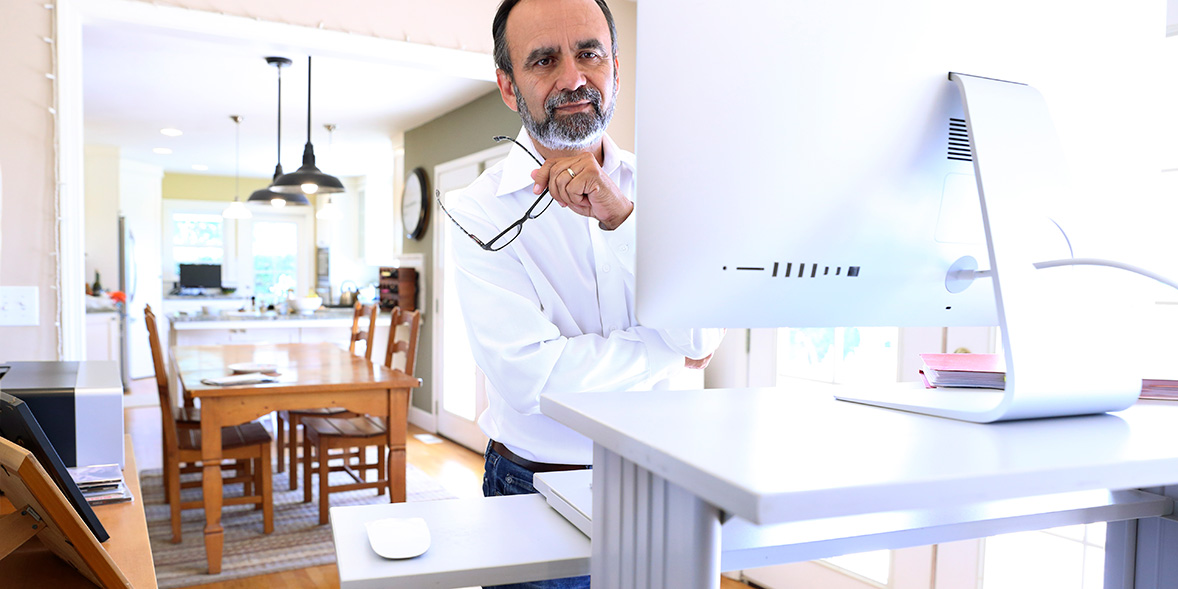
Home office in a spare room
- Pros: Plenty of space to work with, minimal distractions.
- Cons: You may need to rearrange things if guests come over.
In a spare room, you'll have privacy, more space for your desk, chair, tech and storage and there's no need to tidy every night – you can simply shut the door. Consider a sofa bed and a folding desk if the room is also occasionally used by visitors.
Home office in a living room
- Pros: Likely positioned close to your internet router, large space.
- Cons: A shared space if you don't live alone, lots of potential distractions.
You might need to remind other members of the house to use headphones if they want to listen to music, watch TV or play video games. In fact, it's probably a good idea to set up your living room workspace in an area that's facing away from the TV.
Home office in a dining room
- Pros: The dining table can function as a large home office desk.
- Cons: You may need to clear space regularly so you can eat.
The dining room can potentially work as a home office. Check the table height to see whether it works as a desk and, if you're using a laptop, put a cover down so you don't scratch the surface.
Home office in a garden
- Pros: Fewer distractions if you're working in your own private space.
- Cons: Probably positioned far away from your internet router.
A garden room could potentially be converted into a working space. A garden office can offer pleasant views and lots of natural light. Plus, the simple act of leaving the house can also create that feeling of 'going to work', which can be beneficial for those who have trouble switching off after work.
Consider adding a wi-fi extender or mesh system if you're internet connection needs a boost. Think about your home insurance and whether or not your current plan covers an outbuilding, as well.
For further advice on garden offices, read our guide on how to buy the best garden room.
Home office in a loft
- Pros: Likely to be a quiet space where you can focus with minimal distractions.
- Cons: Turning your loft into a home office could be expensive if you're starting from scratch.
A spacious loft can make for a nice, private home office space. Consider your insulation, as loft spaces can get hot in the summer, and cold in the winter, and your internet access, too.
Find out how to get started with our guide on how to plan a loft conversion.
Home office furniture
Home office desks
Your home office desk needs to be stable and potentially strong enough to support chunky tech products such as desktop PCs and printers.
Having a desk with lots of storage space is a bonus, but make sure there's enough room for your knees or you won't be comfortable. Drawers to the side will generally give your legs better clearance.
For more tips on what to watch out for, and good desk recommendations, see our home office desk buying guide.
Home office chairs
If you’re shopping for a home office chair, make sure you choose one that provides plenty of back support.
To help you choose wisely, we’ve tested a range of home office chairs from big-name brands such as Flexispot, Herman Miller, Ikea and John Lewis.
For every office chair we test, our experts twist, pull and push all the adjustable parts to their limits to see how much support they offer during long work sessions. Our panel then sits in each chair for an uninterrupted hour to rate its comfort.
To see which office chairs we recommend, explore our guide to the best office chairs.
Useful home office accessories
- Desk lamp – a cheap way of adding some light to your workspace. A desk lamp with a swing arm is easily adjustable, or you can buy an organiser desk lamp that has built-in slots for pens and post-it notes.
- Ergonomic footrest – stay comfortable at your desk with a portable footrest. These reduce pressure on your legs and your lower back, plus they're relatively cheap.
- Laptop stand – position your screen right in front of your eyes so you're not sat in a position that's bad for your back.
- Phone cradle – this will keep your phone still if you're using it for video calls. If your smartphone has wireless charging functionality, you can pick a stand that gives your mobile some juice at the same time.
- Whiteboard or corkboard – a handy place for ideas and notes that might otherwise get lost in notebooks or on scraps of paper. Hang one just above your PC monitor or laptop for quick access.
Home office tech
Laptops
An entry-level laptop with a small screen can be yours for less than £200, but at this price, the laptop will probably only be able to deal with simple tasks. Here are a few things to consider when deciding what you need from a laptop, and how much to spend.
- Cheap laptops (<£500) – good enough for writing up documents and sending off emails. A Chromebook is worth a look if you're on a tight budget – discover the best Chromebooks according to our tests.
- Mid-range laptops (£500-£800) – you'll get a bigger screen and enough processing power to edit photos and videos.
- Premium laptops (£800+) – if you want to run lots of resource-intensive apps at once, a model with a top-of-the-range processor is the best option.
How big should my laptop be?
A big-screen laptop makes it easier to multitask as you can have lots of windows open at once, but if you're on a budget, you could save some money by buying a smaller model and hooking it up to a larger monitor.
How much desktop storage do I need?
If your job requires you to deal with large files, pictures and videos, you'll need a good amount. Alternatively, you could rely on a cloud storage service, but you might need to pay a monthly fee for the convenience.
Whatever your budget, check in with our expert laptop reviews to make sure you're grabbing a Which? Best Buy that suits your needs.
Desktop PCs
Although bulky, a desktop PC is far more customisable than a laptop. If your desktop is slowing down after a couple of years, you can add extra Ram (memory) or a new graphics card. You'll also usually get more processing power than you would with a laptop.
Here are a few things to consider when deciding what you need from a PC, and how much to spend.
- Cheap desktop PCs (<£400) – a basic machine for emails, documents and web browsing. Many desktops in this price bracket are powered by an Intel Core i3 processor (i5 and i7 processors are faster).
- Mid-range desktop PCs (£400-£750) – a better option if you're editing pictures and multitasking. There's a jump up in processing power, which means you might be able to choose an Intel Core i5 processor.
- Premium desktop PCs (£750+) – your best option if you plan on editing videos or gaming after you're done working through the day. Expect lots more built-in storage for your larger files.
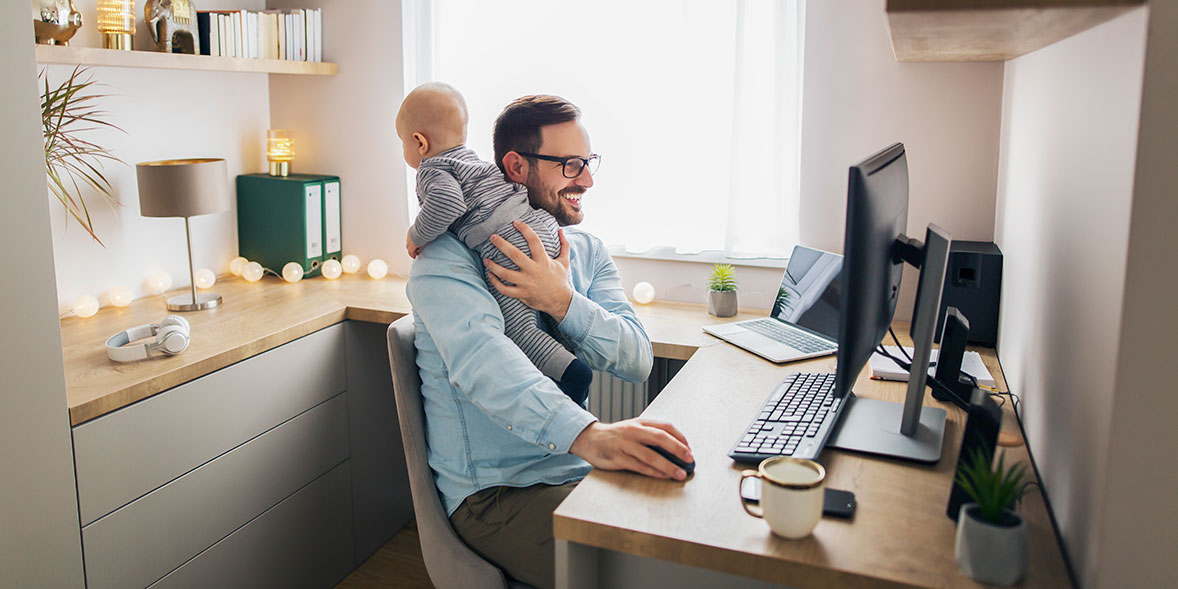
How much desktop PC storage do I need?
Storage space is a key consideration, so think about the size of the files you'll be dealing with. Most desktop PC towers have a couple of empty drive bays, so if you're low on space, you can buy a new hard drive and slot it inside the machine.
How much Ram do I need?
If you're shopping for a basic PC for email, word processing and web browsing, get at least 4GB of Ram. For users that like to multitask or edit photos, 8GB is a better option. If you want a PC for video editing and gaming, grab at least 16GB, if not 32GB, of Ram.
Discover powerful PCs with our guide to the best all-in-one computers.
Reliable broadband
A standard broadband deal will give you speeds of around 8-11Mbps, which is more than enough for a small household. A family of four constantly using the internet should consider a superfast package, usually between 35Mbps and 70Mbps.
The price is made up of payment per month and any upfront costs. Expect to pay from £15 a month for standard broadband and from £35 a month for ultra-fast broadband.
It can pay to haggle. Fishing for a deal might save you from having to swap broadband providers entirely, instead scoring you a cheaper plan with your current provider.
Make sure your broadband is good enough to support you while you're working from home by using our free broadband speed checker tool. Make a note of how the results compare to the speeds you were promised when you signed up with your provider.
To help you save money, we've put together an in-depth guide on the best broadband deals.
Printers
If your work requires you to print off professional-grade photos or posters, your employer may be able to advise on which models are best. Otherwise, an affordable printer for less than £100 should be fine.
Here are a few things to consider when deciding what you need from a printer, and how much to spend.
- Cheap printers (<£100) – a cheap printer should be fine if you just need to print A4 documents, forms and the odd photo.
- Mid-range printers (£100-£300) – for printers that can churn out high-quality prints larger than A4. Mid-range printers can usually offer an automatic document feeder, or automatic double-sided printing.
- Premium printers (£300+) – Premium printers can produce high-quality prints extremely quickly and many have touchscreen displays that let you edit photos on the printer itself.
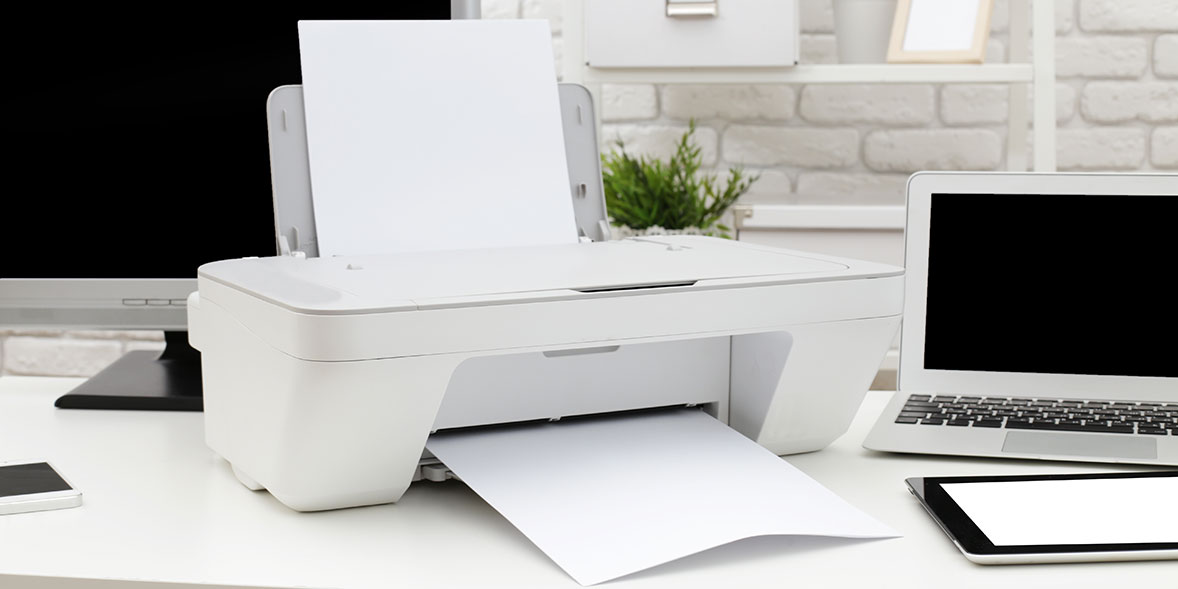
Should I buy an inkjet or laser printer?
Inkjet printers are the smaller of the two and can handle text-heavy documents and print photos. Our expert tests show they usually cost you less up front, but more in the long term.
Laser printers are designed to churn out documents, graphs and charts. They're generally faster than inkjets, but they're also bulkier and louder. If you're printing photos in your home office, a laser printer is the better option.
To make sure you end up with a printer you can rely on, Which? members can read all our expert printer reviews.
Headphones
The best headphones block out the outside world and help you focus on your work without any interruptions. Here are a few things to consider when deciding what you need from your headphones, and how much to spend.
- Cheap headphones (<£50) – the majority of headphones at this price are in-ear. Budget headphones suit occasional use, but you'll get a comfier fit from pricier alternatives.
- Mid-range headphones (£50-£150) – expect improved build and sound quality. You may also get handy extras, such as a bundled travel case or voice command support.
- Premium headphones (£150+) – should offer the best noise-cancelling technology and comfort.
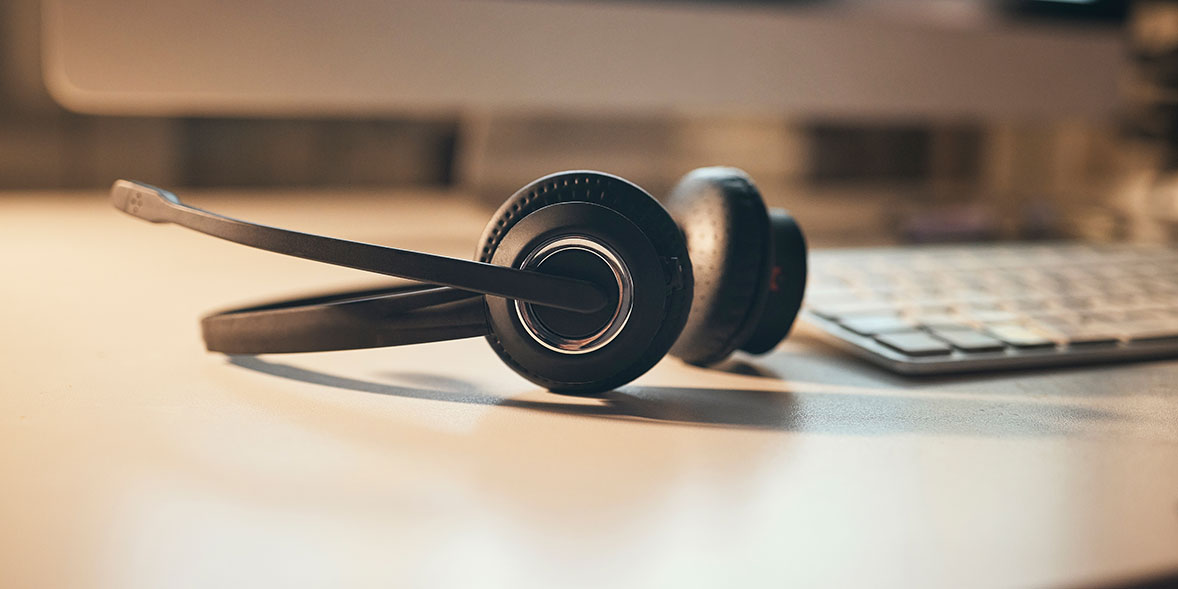
What type of headphones are best?
Noise-cancelling headphones, which usually cost at least £100, are ideal for noisy spaces. They make it easier to move around in your home office, but you'll need to consider battery life as the headphones will need charging regularly.
Headphones with built-in microphones
If you're leading a group presentation remotely at your computer, having some mic-equipped headphones will help others hear what you're saying. You could potentially rely on the microphone built into your work PC, but the sound won't be as crisp. Investing in a headset for work that has a microphone stalk right next to your mouth will make things clearer.
Our rigorous lab tests reveal the best over-ear, on-ear and in-ear headphones. Compare options from Apple, Bose, Sennheiser and more with our headphones reviews.
Monitors
You might need a monitor to use with your desktop PC. Or if you're using a small laptop to work from home, you can plug your laptop into a monitor to mirror or extend your display to the larger screen. This makes it far simpler to multitask.
Here are a few things to consider when deciding what you need from a monitor, and how much to spend.
- Cheap PC monitors (<£100) – most cheap PC monitors go up to around 24 inches. Expect a resolution up to 1080p.
- Mid-range PC monitors (£200-£300) – screen sizes of between 24 inches and 30 inches. Some mid-range monitors are 'ultrawide' (21:9 aspect ratio rather than the traditional monitor screen ratio of 16:9, so you can fit two documents side by side) or curved.
- Premium PC monitors (£300+) – ideal if you work in graphic design, as you get extra screen space (more than 30 inches) and better colour accuracy. Screen resolution can go right up to 4K.
What size monitor do I need for a home office?
Consider the shape of your home office and desk space. Most home office setups should comfortably fit a 24-inch monitor, which is one of the most popular sizes. If you're tackling complex design tasks, go for a larger screen.
What monitor resolution do I need?
This impacts how clear text and images appear on-screen. For example, 1080p resolution (1,920x1,080 pixels) is clearer than 720p resolution (1,280x720 pixels). At the higher end of the scale is 4K, but that resolution is typically reserved for monitors beyond the £300 mark.
For more expert advice on buying a monitor for your home office, see our guide on the best computer monitor.
Create a home office for free
Kirsty Angerer, ergonomic consultant and member of the Chartered Institute of Ergonomics & Human Factors, recommends these swaps:
- Use a pile of books instead of a footrest.
- Use cushions or a rolled-up towel instead of a lumbar support cushion.
- Put your laptop on a box to raise it instead of buying a dedicated laptop stand.
- Connect your laptop to your TV monitor using an HDMI cable to give you a bigger screen to work on.
- Your kitchen table and a dining chair might prove useful if you don't want to invest in a new home office desk, but always consider your posture when working.
- Take the drawer out of a kitchen table or dressing table to get your legs under it for use as a desk.
- A sturdy ironing board can be used as a desk for either sitting or standing once you’ve checked the height – and can be easily put away at the end of the working day.










